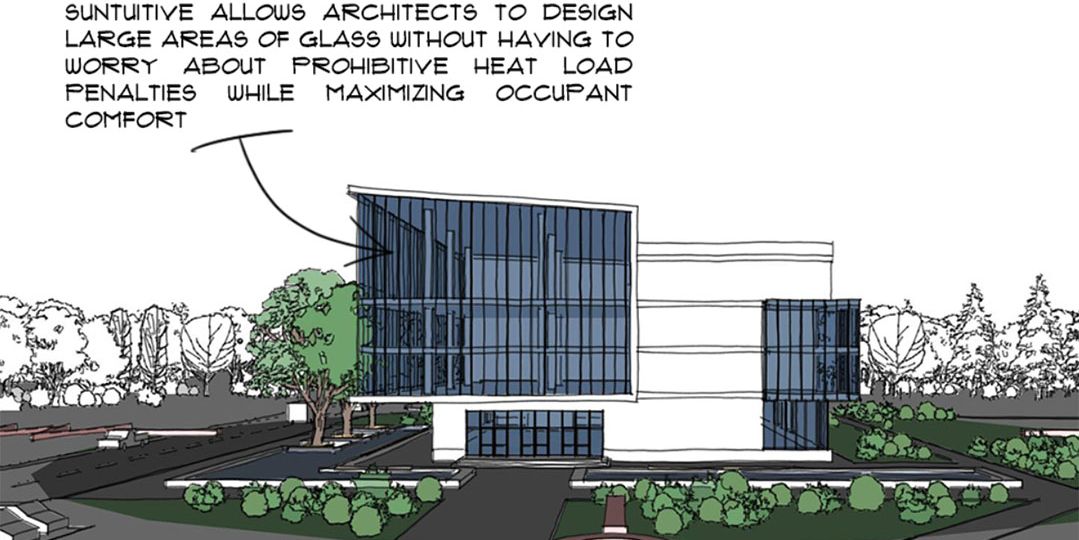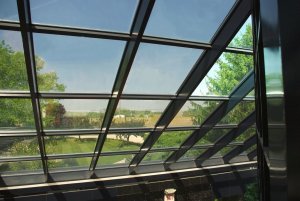A Clear View of Dynamic Glass Options

Dynamic glass is all the rage in the glass industry, and for good reason. Not only can dynamic glass cut energy use and save money, it can also make living and working spaces more comfortable.
Right now, most commercially available dynamic windows are based on two technologies: passive (thermochromic) and active (electrochromic). Here are a few pros and cons for each, along with brief descriptions of how they work:
Thermochromic Windows
Thermochromic windows gradually darken in response to rising temperatures caused by direct sunlight, then cool as the sun moves across the sky, returning to a clear, neutral state in cloudy or dark environmental conditions. An example of this is the Suntuitive interlayer, which is made from a polyvinyl butyral (PVB) film that is laminated between two panes of heat-strengthened or tempered glass and incorporated into an insulated glass unit (IGU).
Pros:
- Continuously adapts tint level in response to heat from direct sunlight
- Installation is the same as any traditional window system
- Can work in round, curved, and operable windows
Cons:
- Cannot be manually controlled
- On a cold and windy, but sunny day in the winter, the glass may not receive enough heat from direct sunlight to darken. However, this allows solar heat gain to help warm a home or building.
- Added weight to insulated glass unit
Electrochromic Windows
Electrochromic windows change color in response to electrical stimulation. When a voltage is applied to the multilayer electrochromic coating on the glass, ions migrate between layers causing the color of the coating to change. The higher the voltage applied the darker the glass tints.
Pros:
- Tint level can be adjusted with a user-controlled device
- Individual windows can be tinted to different levels
- Can include sensors to automatically adjust tint level
Cons:
- Installation is more difficult and requires wires to each window unit
- Currently not available in round and some types of curved windows
- Need for wiring and mechanical intervention increases the risk of failure
If you have questions about the different dynamic glass technologies and how they can improve your home or office, give us a call at 616.662.7216.




